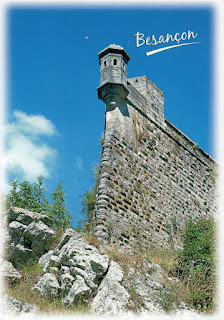The Vilnius historic centre is another of the many historic centres that I'd love to visit
 |
| Vilnius |
The Vilnius Historic Centre began its history on the glacial hills that had been intermittently occupied from the Neolithic period; a wooden castle was built around 1000 AD to fortify Gedimino Hill, at the confluence of the Neris and Vilnia rivers. The settlement did not develop as a town until the 13th century, during the struggles of the Baltic peoples against their German invaders. By 1323, when the first written reference to Vilnia occured, it was the capital of the Grand Duchy of Lithuania. (...) By the 15th century, the Grand Duchy of Lithuania, with its capital Vilnius, had become the largest country in Europe, stretching from the Baltic Sea in the North to the Black Sea in the South. The historic centre comprises the areas of the three castles (Upper, Lower and Curved) and the area that was encircled by a wall in the Middle Ages. The plan is basically circular, radiating out from the original castle site. The street pattern is typically medieval, with small streets dividing it into irregular blocks, but with large squares inserted in later periods.
 |
| Vilnius |
The historic buildings are in Gothic, Renaissance, Baroque and Classical styles and have a distinct appearance, spatial composition, and elements of internal and external finishes. They constitute a townscape of great diversity and yet at the same time demonstrating an overarching harmony. - in: http://whc.unesco.org/en/list/541
 |
| Gediminas' Tower |
This postcard was sent by Ernesta
The first wooden fortifications were built by Gediminas, Grand Duke of Lithuania. The first brick castle was completed in 1409 by Grand Duke Vytautas. The three-floor tower was rebuilt in 1930 by Polish architect Jan Borowski. Some remnants of the old castle have been restored, guided by archaeological research.
Gediminas' Tower is an important state and historic symbol of the city of Vilnius and of Lithuania itself. It was depicted on the former national currency, the litas, and is mentioned in numerous Lithuanian patriotic poems and folk songs. - in: wikipedia
 |
| Church of St. Johns |
This postcard was sent by Paulius
The Church of St. Johns, St. John the Baptist and St. John the Apostle and Evangelist is located at the Old Town of Vilnius, Lithuania and dominates the university (Vilnius University) ensemble. Since the times of the Jesuit Academy professors and students used to pray here, and Vilnius theologians gave sermons.
The church was built in 1388–1426, reconstructed in the 16th and 17th centuries. The tower, separate from the church itself, was built in the 16th century. After the fire in 1737, from 1738–1748, architect Johann Christoph Glaubitz completely reconstructed the church in style of late Baroque. During the 1827-28 reconstruction, architect Karol Podczaszynski destroyed the bulk of the sumptuous Baroque interior - nearly 3000 carts with splinters of altars, sculptures and stucco works were taken to a dump; chapels suffered the least. - in: wikipedia
 |
| Vilnius Cathedral |
This postcard was sent by Valdemara
This postcard was sent by Audrius
Inside, there are more than forty works of art dating from the 16th through 19th centuries, including frescoes and paintings of various sizes. During the restoration of the Cathedral, the altars of a presumed pagan temple and the original floor, laid during the reign of King Mindaugas, were uncovered. In addition, the remains of the cathedral built in 1387 were also located. A fresco dating from the end of the 14th century, the oldest known fresco in Lithuania, was found on the wall of one of the cathedral's underground chapels. - in: wikipedia













































